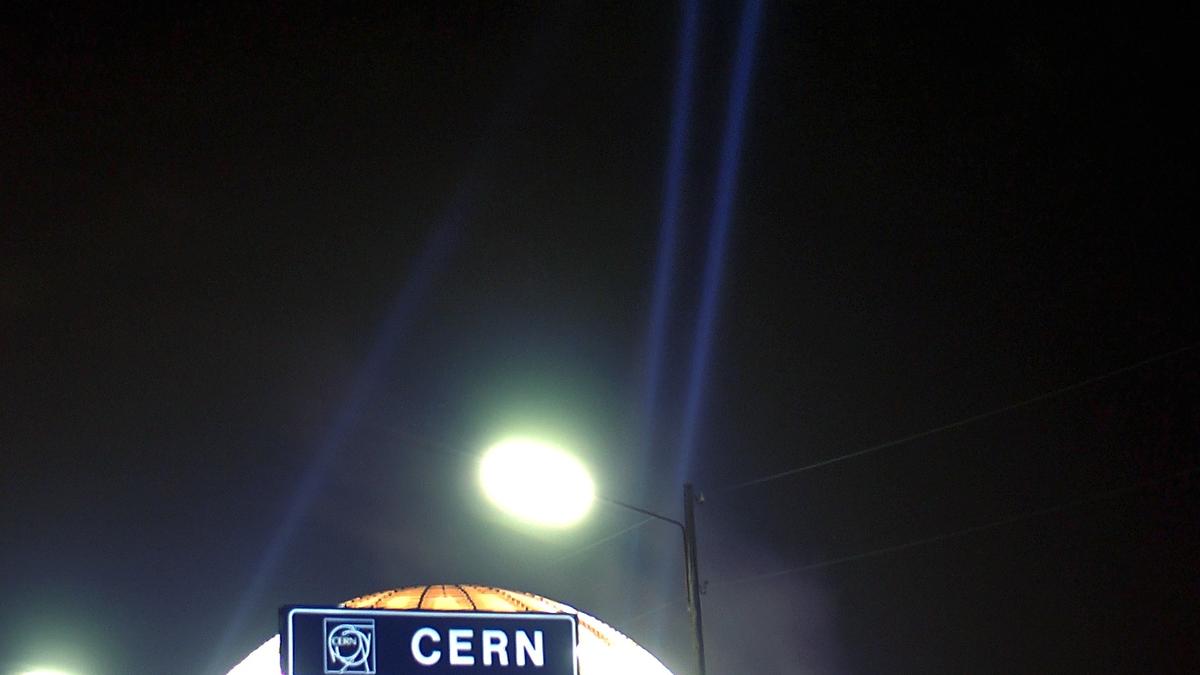An acronym that stayed…
Late in the 1940s, following the end of World War II, a small number of visionary scientists – including Danish physicists Niels Bohr and French physicist Louis de Broglie – became aware of the need for Europe to have a world-class physics research centre. By December 1951, with some assistance from UNESCO, a resolution regarding the establishment of a European Council for Nuclear Research was adopted. This provisional council was established two months later when 11 countries signed an agreement. The acronym CERN is the abbreviation of the French name of this provisional council – Conseil européen pour la Recherche nucléaire.
CERN’s convention signed by representatives of the organisation’s twelve founding member states.
| Photo Credit:
CERN
One of the first decisions that the council made was to choose the laboratory’s location. Geneva’s central location and Switzerland’s neutrality during the war meant that it was selected as the site for the CERN laboratory by the third session of the council in 1952. The draft convention was completed by June 1953 and approved unanimously. By July 1, 1953, representatives of all 12 founding member states of CERN had signed the convention. Gradually, all 12 founding member states ratified the convention. Following ratification by France and Germany, the European Organization for Nuclear Research officially came into existence on September 29, 1954.
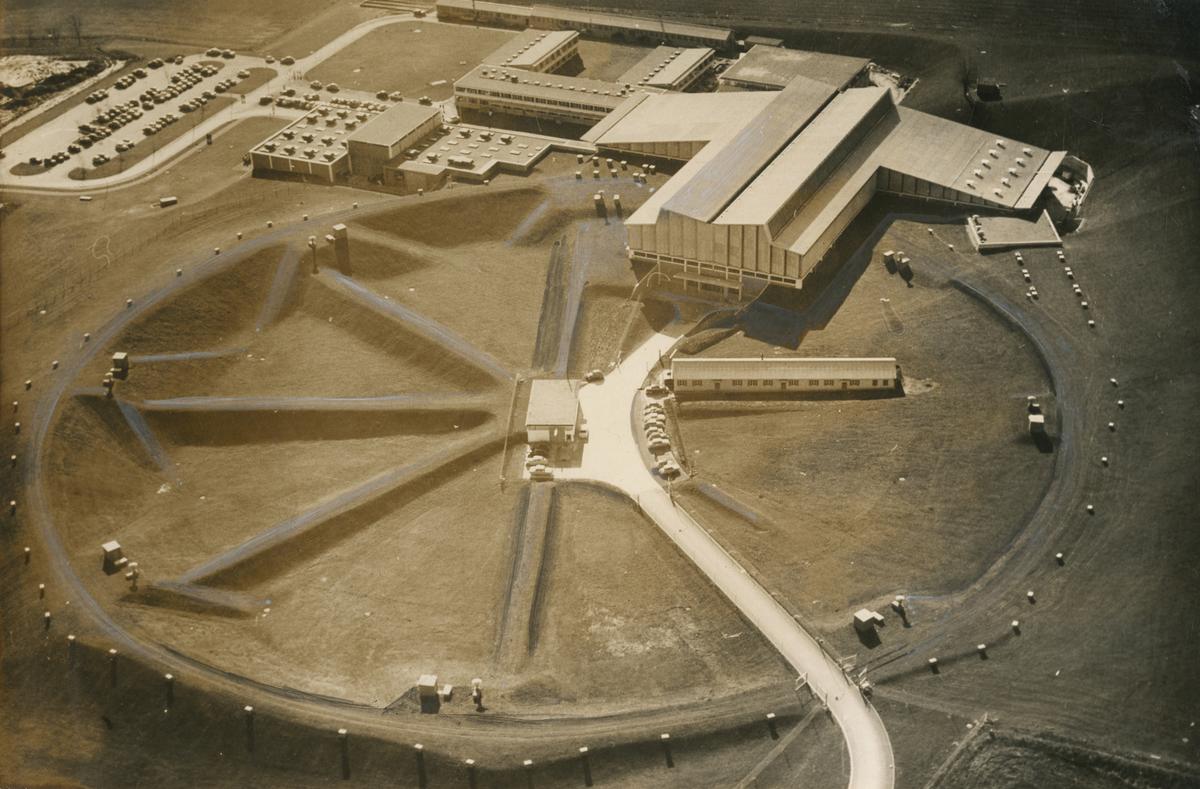
The underground synchro-cyclotron assembly and accessory units at the European Organization for Nuclear Research at Meyrin near Geneva.
| Photo Credit:
THE HINDU ARCHIVES
CERN’s first accelerator, a 600 MeV synchrocyclotron, got going in 1957 and remained in operation until 1990. This picture of the synchrocyclotron was published in The Hindu in February 1960.
A touch screen pioneer…
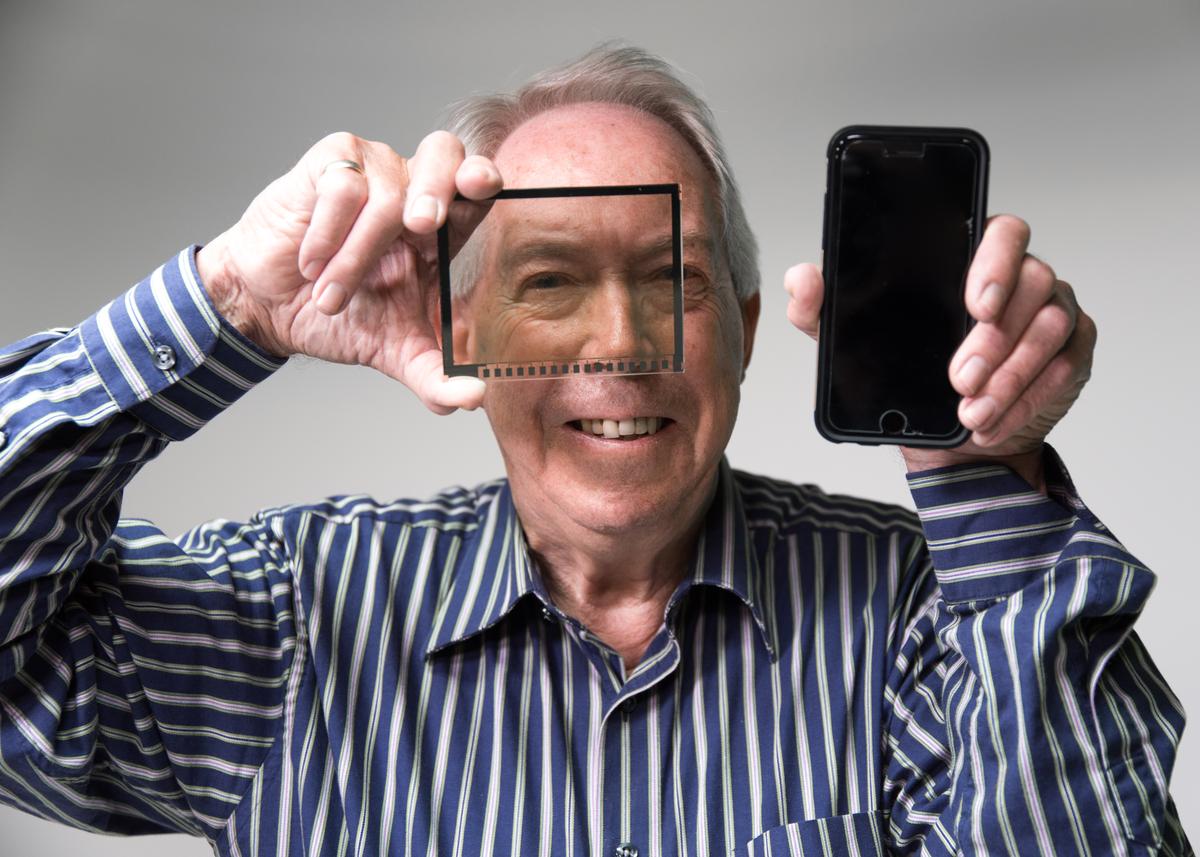
Bent Stumpe with touchscreen prototype.
| Photo Credit:
CERN
When computer scientist Frank Beck approached electronic engineer Bent Stumpe (below) with the problem of controlling an upcoming new accelerator’s (Super Proton Synchrotron (SPS)) complex systems early in the 1970s, Stumpe wasn’t stumped. Instead, he came up with a solution that was extremely simple mechanically. In a handwritten note dated March 11, 1972, Stumpe gave his proposed solution – a capacitive touch screen with a fixed number of programmable buttons on a display. A prototype was produced and the SPS project decided to use the technology. Stumpe and Beck described their touch screen in a 1973 CERN report. The SPS control room was fully equipped with touch screens when it began operation in 1976. While CERN wasn’t involved in further development of touch screens beyond this, and their control centres no longer employ touch screens to control accelerators, you probably already know why this was important. Be it smartphones, tablets, or even computers, touch-screen technology is now everywhere!
Discovery of W and Z particles
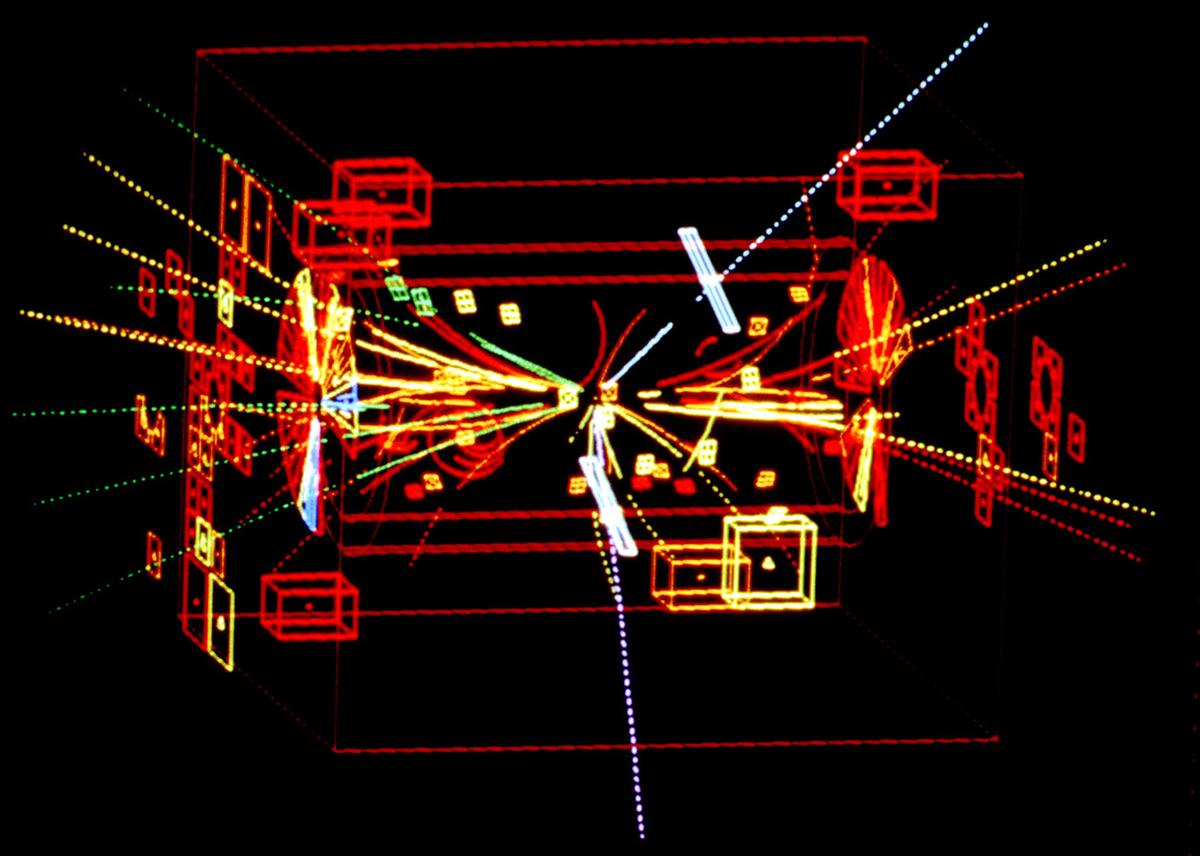
Z0 particle, as seen by the UA1 experiment on April 30, 1983.
| Photo Credit:
CERN
It was decided that the SPS would be converted into a proton-antiproton collider by 1979. Two years after the project was approved, the first proton-antiproton collisions were achieved. The collision debris was searched for signs of W and Z particles using two experiments, UA1 and UA2.
CERN announced the discovery of W and Z particles – carriers of the weak interaction between particles – in 1983. The first detection of a Z0 particle, as seen by the UA1 experiment on April 30, 1983, is pictured above. While the Z0 itself cannot be seen as it decays very quickly, the electron-positron pair produced in the decay appear in blue. Just a year after the discovery, Italian particle physicist Carlo Rubbia and Dutch physicist Simon van der Meer were awarded the 1984 Nobel Prize in Physics for their decisive contributions to the large project.
The birth of the world wide web
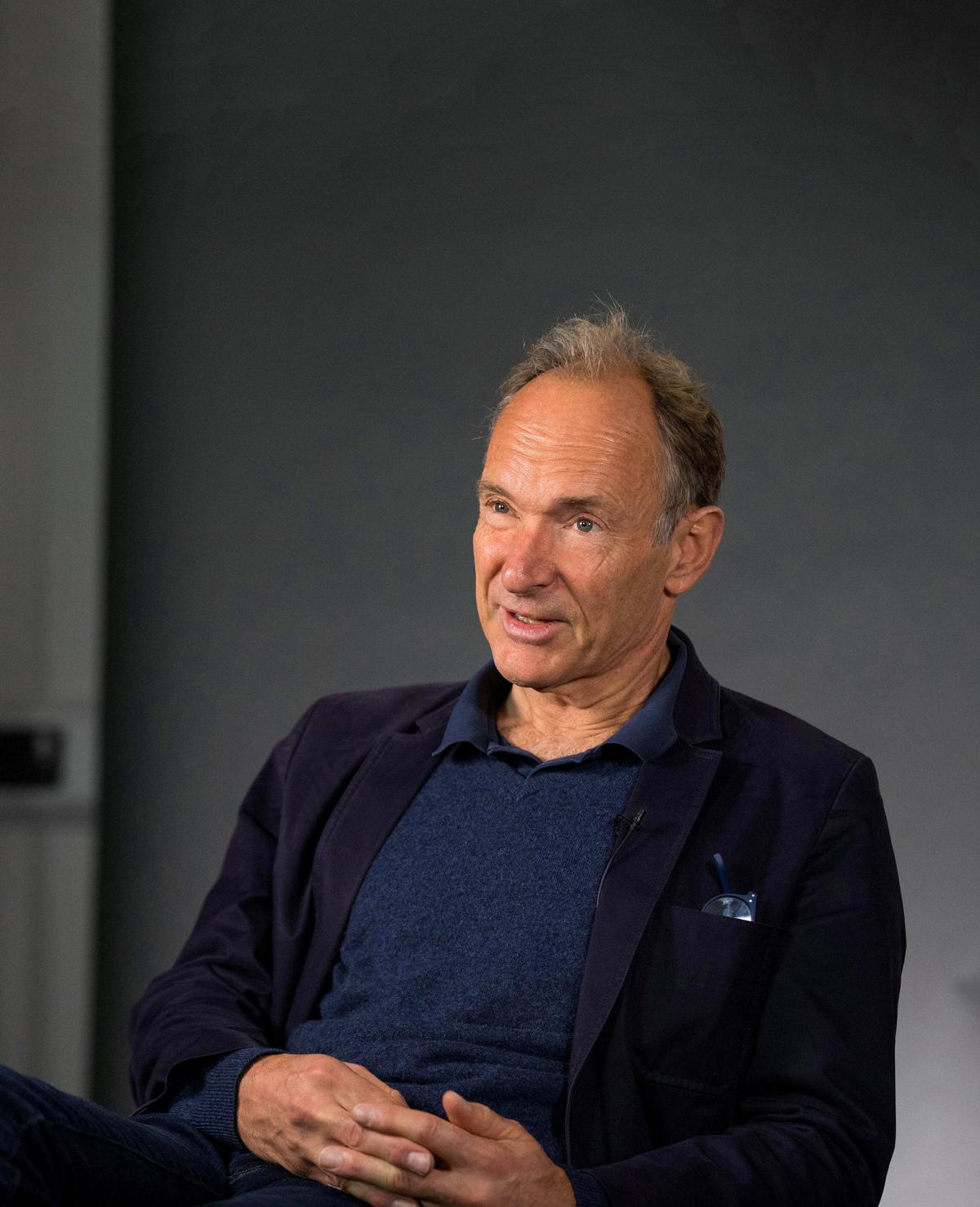
World Wide Web founder Tim Berners-Lee speaks during an interview ahead of a speech in October 2018.
| Photo Credit:
REUTERS
In the prologue to This Is for Everyone: The Unfinished Story of the World Wide Web, a September 2025 book authored by Tim Berners-Lee (with Stephen Witt), he says that “CERN’s assignment was to discover the origins of matter, not sponsor experimental networking technology. Still, I relentlessly petitioned my bosses at CERN to fund the World Wide Web.” In case you are still wondering, Berners-Lee is the inventor of the World Wide Web. While it wasn’t easy, Berners-Lee was able to secure the time necessary “to work on it from CERN”, as he went on to build “the first web page, the first web browser and the first web server, all on a single computer in a small room on the second floor of the Computing and Networking building.”
While it might seen unimaginable to think of a world without the Web, it was a reality that even the bulk of the current population lived through, including your parents and grandparents. Invented by Berners-Lee in 1989, the Web was designed originally as a way for scientists around the world to share information. By Christmas 1990, Berners-Lee had the basic concepts fleshed out. Running on a NeXT computer at CERN, info.cern.ch was the address of the world’s first web server. Brought into the public domain in 1993 and made freely available so that anyone could use a basic browser or run a web server, the World Wide Web has since come a really long way!
50 years of CERN
CERN was born with a commitment of science for peace. In fact, CERN’s convention states that “The Organization shall have no concern with work for military requirements and the results of its experimental and theoretical work shall be published or otherwise made generally available.” It has remained true to this commitment throughout its existence.
CERN celebrated turning 50 in grand style, with the inauguration of the Globe of Science and Innovation. First used as a pavilion underlining the theme of sustainable development during the Swiss national exhibition in 2002, the Globe was redeveloped into a new visitor centre for CERN. The inauguration of the Globe, which now serves as a focal point for CERN’s interaction with the wider society, was held on October 19, 2004 and attended by representatives of the organisation’s 20 member states.
The discovery of the Higgs boson particle
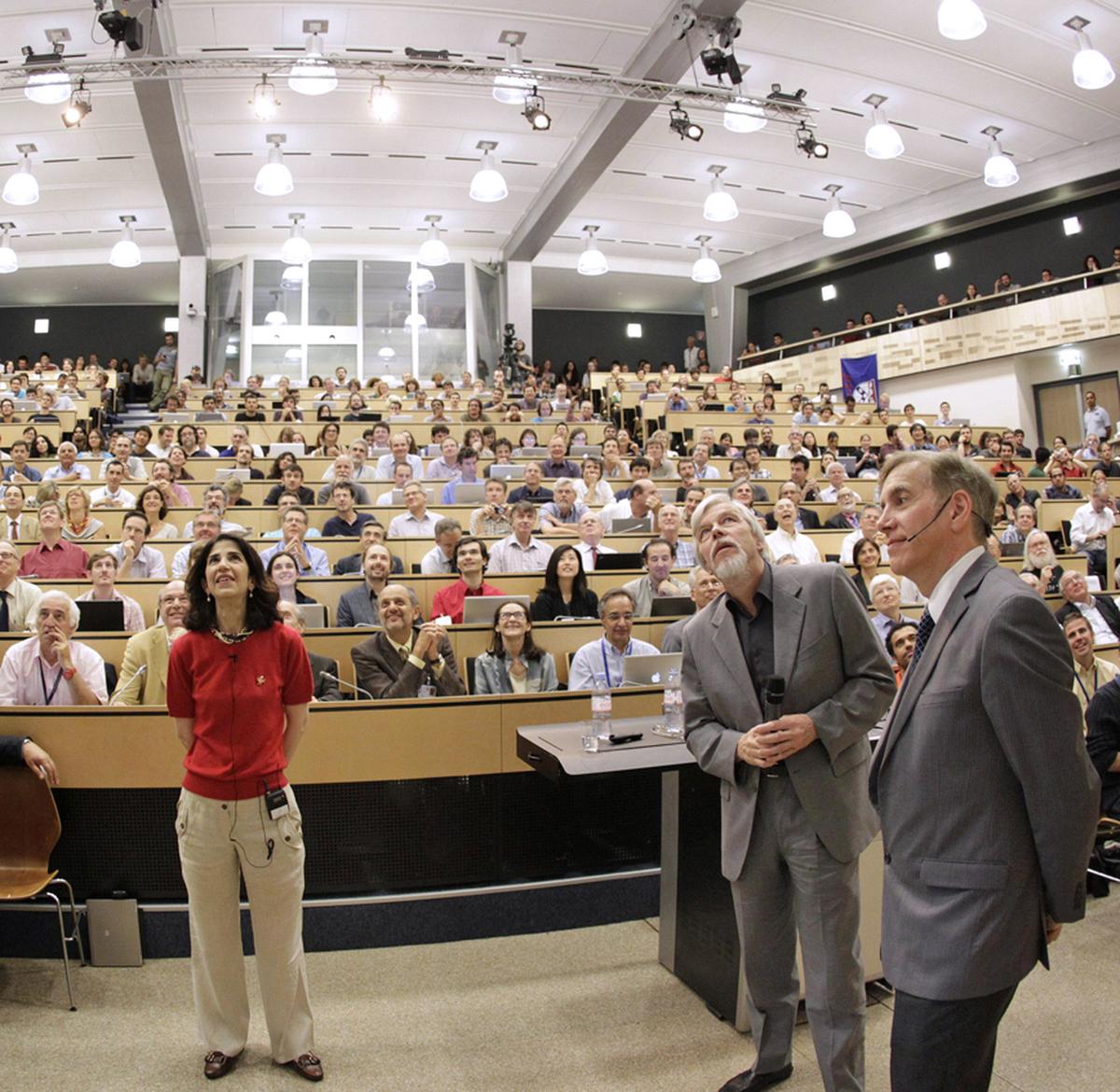
Rolf Heuer, CERN Director General (second from right), Fabiola Gianotti, ATLAS experiment spokesperson (left), and Joe Incandela, CMS spokesperson, look at a screen during a scientific seminar to deliver the latest update in the search for the Higgs boson at the European Organization for Nuclear Research (CERN) in Meyrin near Geneva, Switzerland, on July 4, 2012.
| Photo Credit:
AP
Everything we know – including ourselves – is made of particles. While all particles had no mass and sped around at the speed of light when the universe began, a fundamental field associated with the Higgs boson gave particles their mass. The existence of this mass-giving field was confirmed in 2012 when the CERN announced the discovery of the Higgs boson particle. The discovery was no easy task as the Higgs boson appears in about one in a billion Large Hadron Collider (LHC) collisions. The discovery of a new particle was announced to a packed auditorium at CERN on July 4, 2012 and by further examining copious amount of data, it was concluded in March 2013 that some kind of Higgs boson particle had indeed been discovered. More than a decade after the discovery, plenty still remains to be learnt about this elusive particle.
If and when the proposed Future Circular Collider (FCC) comes into being, the multi-stage particle accelerator will succeed Large Hadron Collider (LHC) and continue the exploration of fundamental physics. The FCC Feasibility Study report was delivered on March 31, 2025 and it could be years before a decision is arrived at. For context, while the physics case for the LHC was made as early as 1984, it was approved 10 years later. The LHC was officially inaugurated in 2008, nearly 25 years later.
Published – September 28, 2025 12:41 am IST
